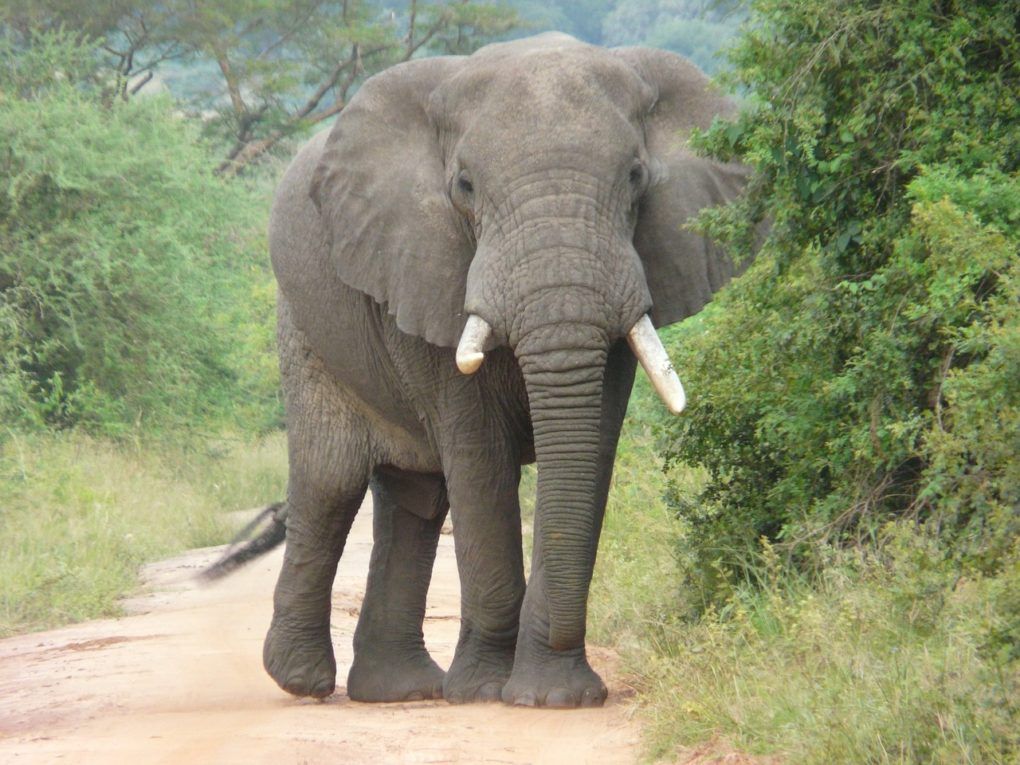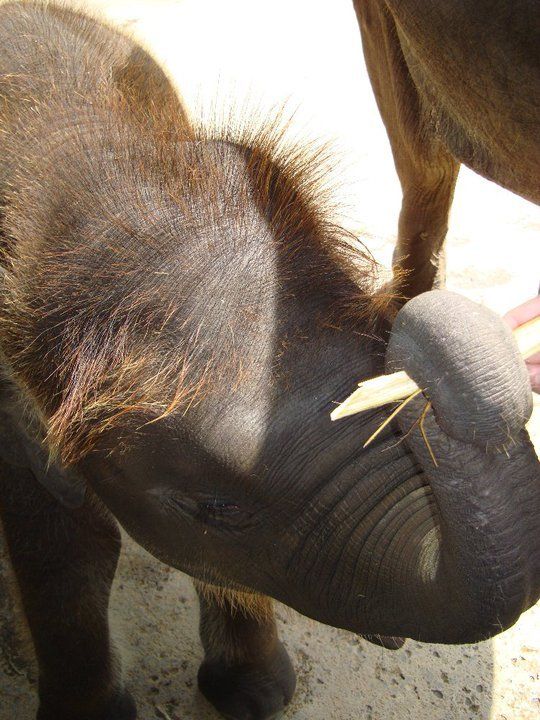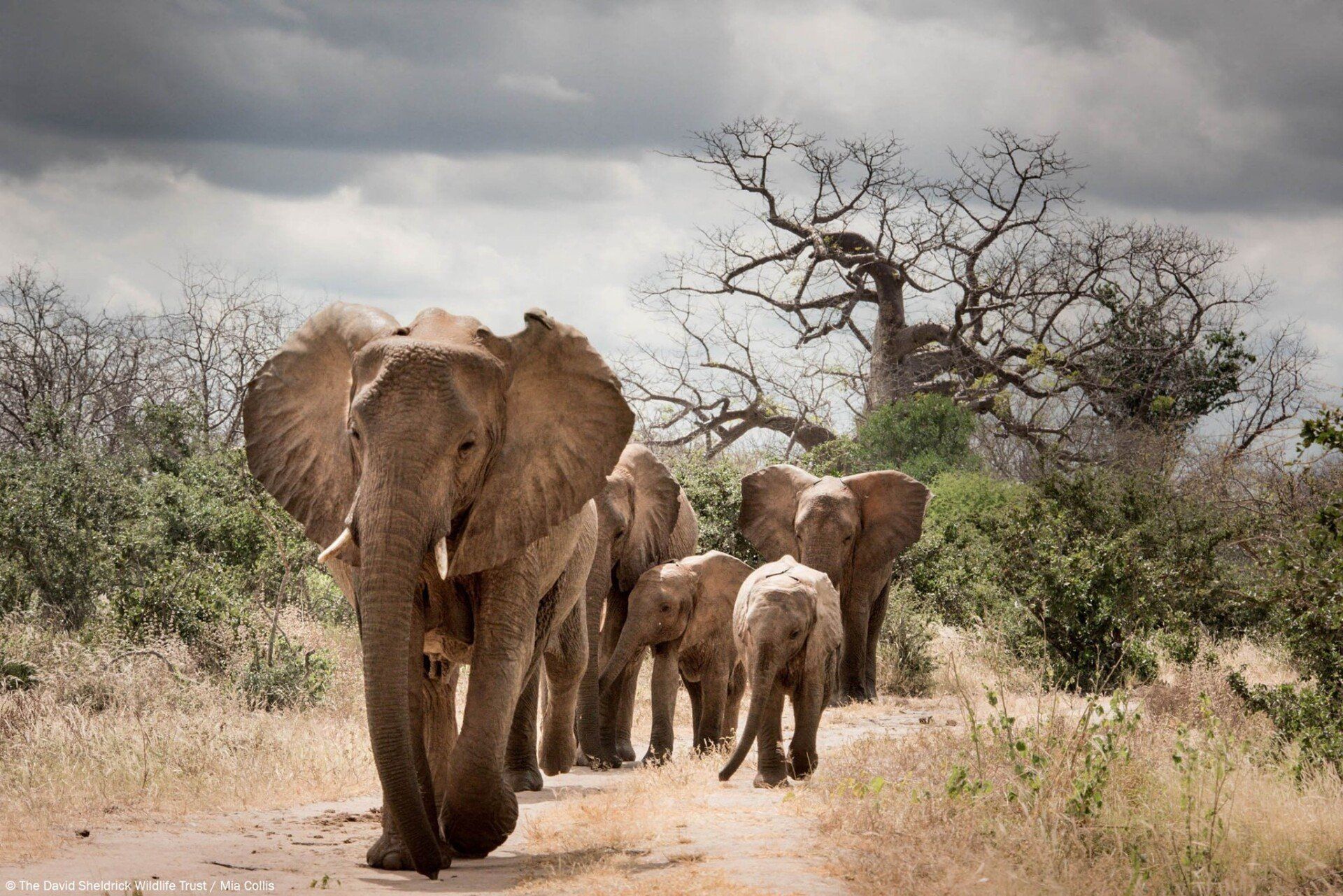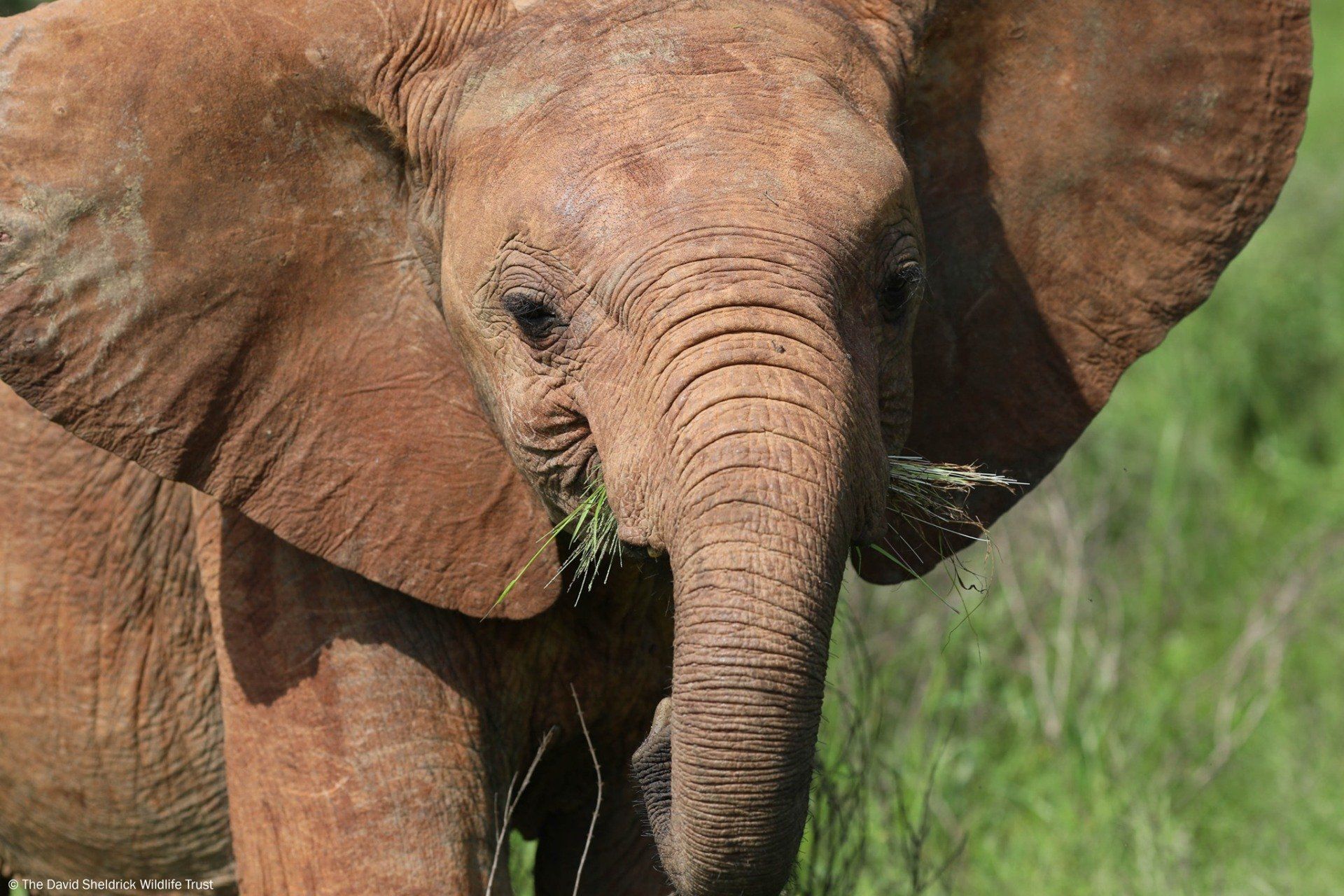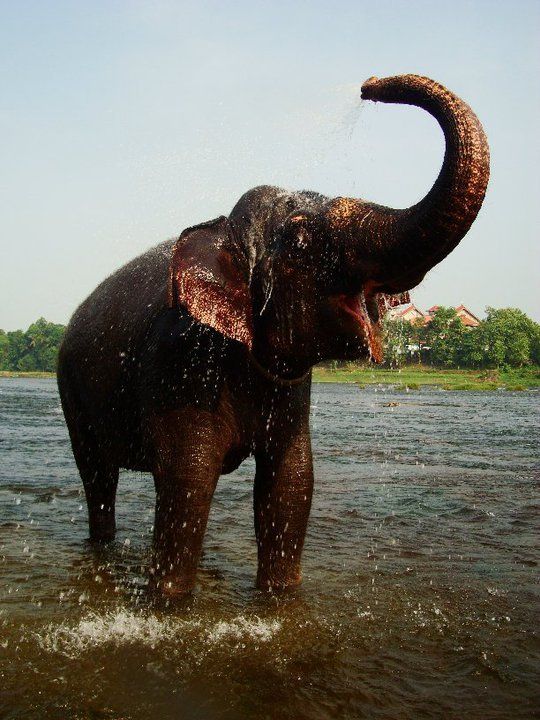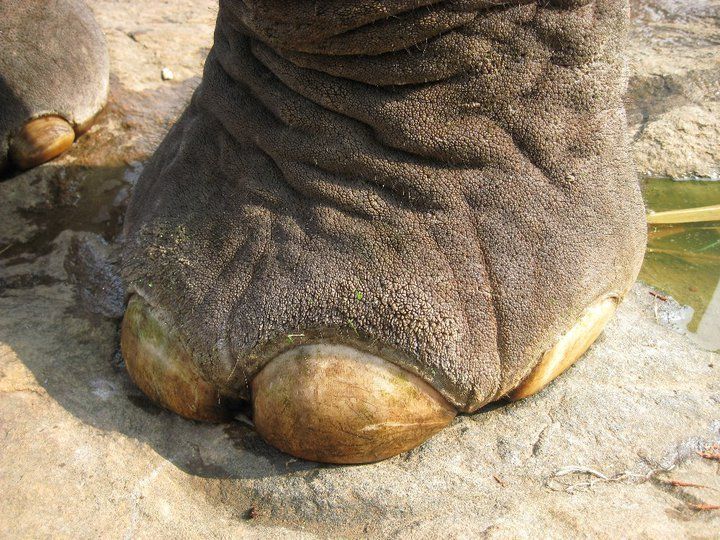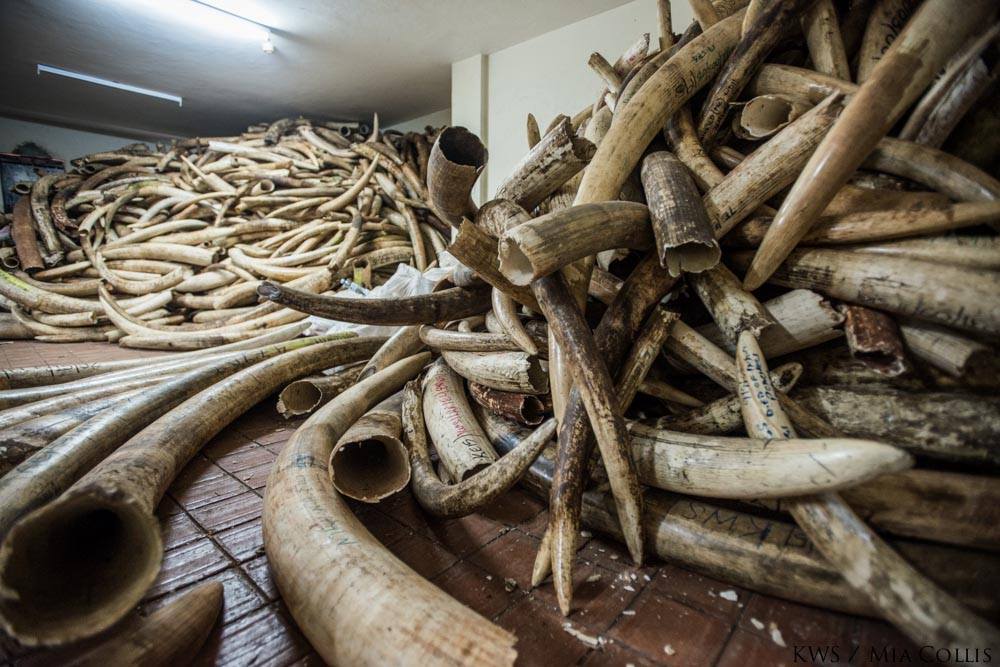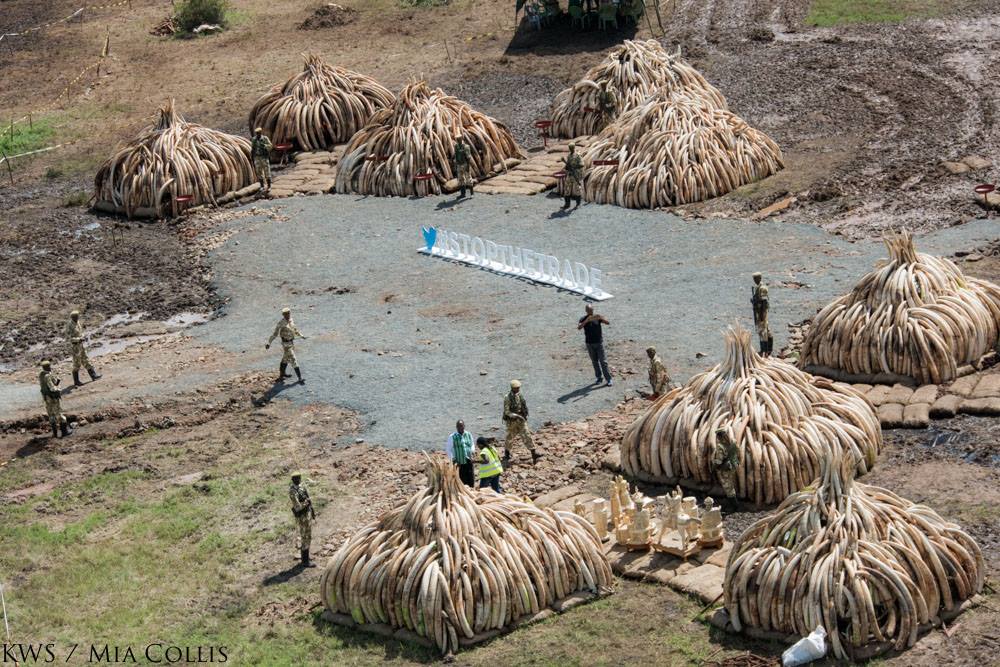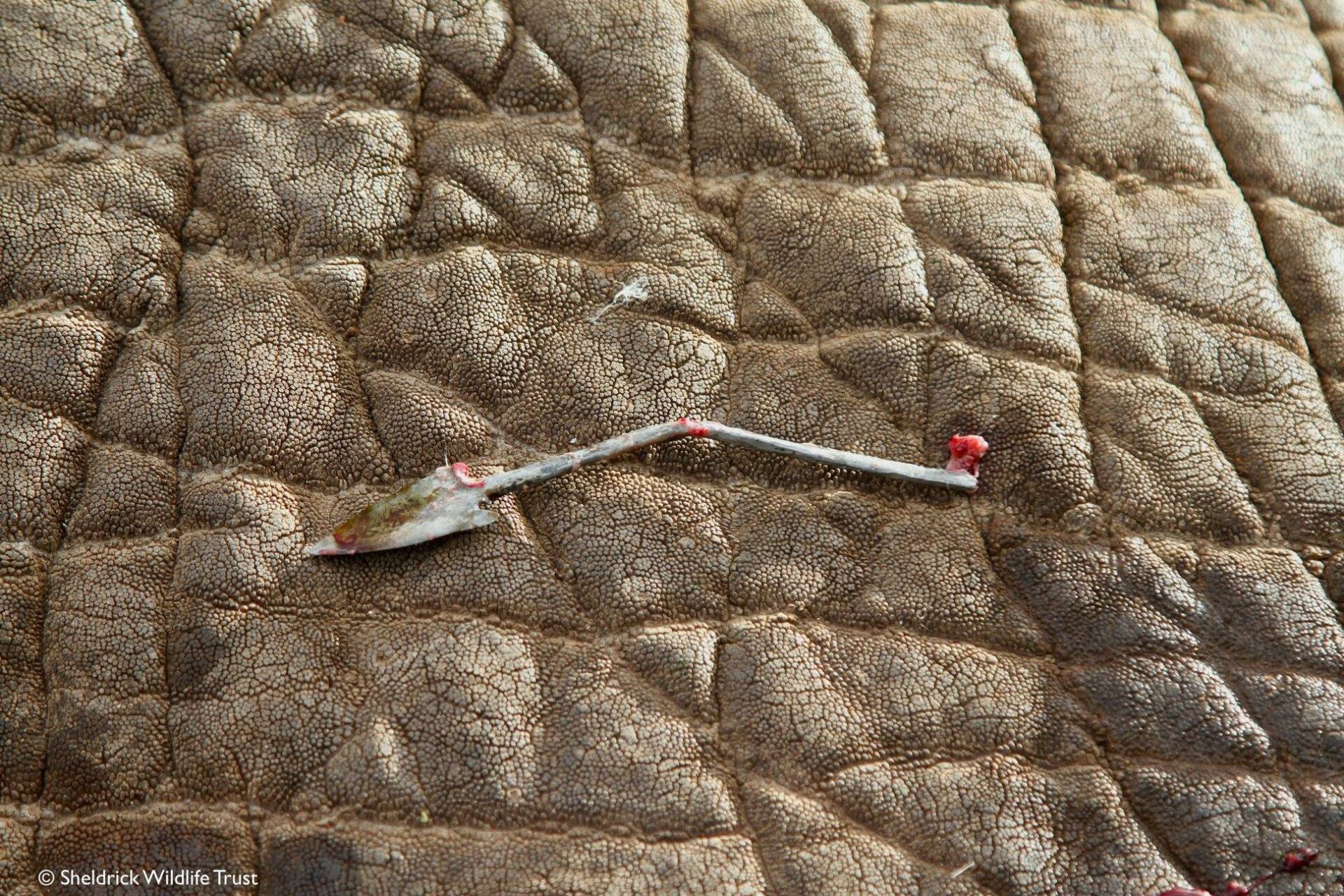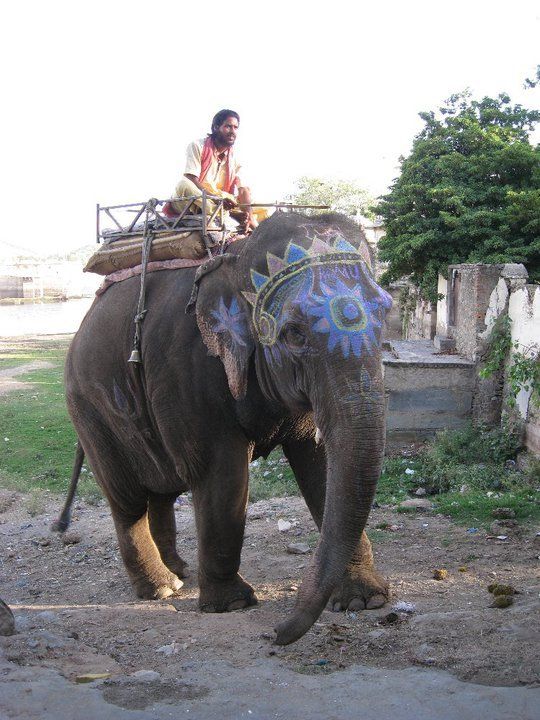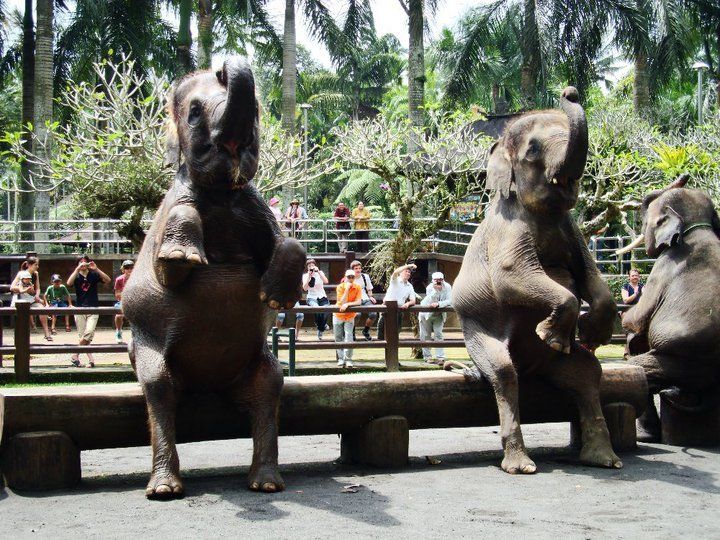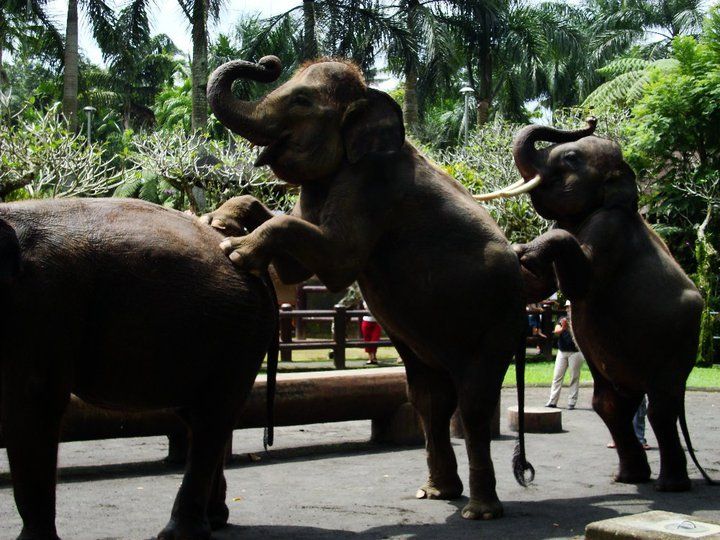The elephants
These threatened giants of Africa and Asia
The different species and subspecies.
Gregarious and intelligent!
Elephants are gregarious animals, highly sociable, endowed with intelligence and exceptional faculties. They live in a herd led by a dominant female (often the most experienced) called the matriarch. Among the elephants, it is Madame who commands! The large males, called tuskers, usually live alone. Groups of immature young males come together and gauge their strengths.This life in society is fundamental for elephants. They cannot survive alone. Their life, their territories, migrations, finding water points and food are often based on the decisions of the matriarch endowed with a great experience that she herself acquired from herelders.
Very protective of their young, the whole herd is called upon to raise and protect the newborns. In many ways, they are similar to humans. It's a real family life! Brothers and sisters, aunts and mothers accompany the little ones and protect them. In case of threat, the adults and sub-adults protect the young by forming a tight circle around them, like a shield.
Their memory is not a legend. Comparable to that of dolphins, great apes or humans, they are able to memorize a water point without returning to it for years! Similarly, they are able to remember individuals who are not part of their group, encountered at water points for example. Individuals who have not met for years recognize each other! During migrations, the matriarchs remember the routes to take, especially with their sense of smell. This collective memory which is transmitted, allows the survival of the herd. Elephants are self-aware and empathetic animals.
The African elephant
- Life expectancy: up to 70 years
- Weighs up to 6 tons and larger than its Asian cousin
- Larger ears and tusks than its Asian cousin
- The end of his trunk has two "finger" protuberances
- A bump on the head
- Curved back.
Photos: Elephants in Kenya. Mia Collis/Sheldrick Wildlife Trust.
Leslie Beaumoit
Asian Elephant
- Life expectancy: up to 50 years
- Weighs up to 5 tons
- Smaller ears and tusks than its African cousin
- The end of his trunk has only one protrusion
- Two bumps on the head, the latter being hairy!
- hollow back
- His feet have more nails than the African
- The pigmentation of his skin on his ears and his trunk can be pink (in Indian and Sri Lankan).
Photos / video: Elephants in India and Sri Lanka.
Sébastien Goutenègre/ Copyright.
food
Les éléphants sont des animaux herbivores, ils s'alimentent de toutes sortes de végétaux : d'herbes (grasses ou sèches), de feuillages et d'écorces. Ils peuvent manger entre 150 à 200 Kg de végétaux par jour!
Dans le désert de Namibie, les éléphants ont dû s'adapter et vont jusqu'à casser les arbres pour en manger l'écorce.
Dans plusieurs régions, l'alimentation est source de conflits avec l'Homme. En effet, les éléphants sont très friands de nos cultures et font des ravages dans les champs, au grand désespoir des cultivateurs qui vont jusqu'à les chasser.
Arrivés à un âge avancé, les vieux éléphants commencent à perdre leurs dents (énormes molaires) leurs permettant de mastiquer. Certains peuvent mourir de faim faute de trouver de l'herbe tendre.
Photos / vidéo: Éléphants au Sri Lanka/ S. Goutenègre
Anatomical features:
Ears
Whether we like it or not, what contributes to the majesty of these mastodons are its magnificent ears! Moreover, Walt Disney had insisted on this anatomical particularity with his flying hero Dumbo, released in 1941! Obviously the ears of our real elephants are not used for them to take off but do have a use! The ears of elephants are very highly vascularized, it is also at this place that we practice blood tests because the skin is thinner and the veins are clearly visible. But THE main function, if not hearing, is a body temperature regulation system. Indeed, nature being well done, these animals which live in very hot latitudes ventilate themselves constantly by flapping their ears in order to cool the blood flow crossing them, which will lower their body temperature! African elephants have bigger ears than their Asian cousins because it is often much warmer in Africa!
Trunk
A member who does not cheat when it comes to elephant! It is a very practical tool in many respects, a real swiss army knife for pachyderm! Anatomically speaking, it is the fusion of the upper lip and the nasal appendage! The trunk is used for many things by elephants, it is even vital! She is heavily muscled, with no less than 150,000 muscles and tendons ! At its end, the trunk ends in one or two (depending on the species) protrusions called "finger". It therefore has several functions: first of all to breathe, to smell, to pump water (up to 8 litres) for drinking or showering, to trumpet (which serves as a sounding board), to catch food (also at height), to sprinkle themselves with water and earth, to move trunks, to communicate by touch between individuals. The trunk serves as language on its own through different postures. In elephant language, we say hello by touching the mouth of our congener with the end of the trunk! Being very tactile animals, the trunk is used to cuddle them! Sometimes, some juveniles are attacked by their predators who cut their trunks. They can obviously die of hemorrhage, but if they survive, without this member to do everything, they will be severely handicapped to meet their basic needs.
Un communicant bien équipé!
The elephant being a gregarious animal living on a vast territory, it is equipped with an effective range of communication tools!
- The most obvious is its cry called the trumpet . Ranging from muffled rumblings to the most acute trumpets! It is able to emit infrasound (less than 20 Hz) inaudible to the human ear.
- His feet ! As surprising as it is, they are able to communicate over very long distances. In effect, they can emit subsonic vibrations transmitted through the tissues of their feet to travel in the ground and reach distant congeners, which they also perceive by their feet!
- Chemistry ! Discharges from the temporal glands make it possible to inform other individuals about the physiological and emotional state of the animal, particularly during periods of musth , corresponding to sexual arousal/activity.
- The physical postures ! Elephants communicate with each other by deploying a whole range of postures: around 20 postures are described with the head, the ears and the trunk.
- Trunk! By touch, which they use to communicate with each other. We greet each other by putting the trunk in the mouth of the other individual, for example. Touch is very important to elephants.
Photos on the right: Elephant from Kenya. Photo: Mia Collis
An important element... water!
As for many living beings, water is vital for the elephant, which is a big consumer! To stay hydrated of course, he is able to swallow large quantities of water with his trunk. But he is also very dependent on it for his skin! Elephants love to bathe and play in water. It is a real treat for them. They usually bathe in groups, even from a very young age. They are also good swimmers!
Photos/ video: S. Goutenègre
Rolling in the mud, a real pleasure!
Mud baths are essential for elephants. Indeed, the mud protects their skin from sunburn and parasites. It is a collective activity that they practice from an early age. They are very fond of it and it is a great recreational moment for them. In Kenya, the elephants are even almost red due to the mud that covers them.
Photo: Mia Collis/ Sheldrick Wildlife Trust
Defenses:
A tooth against the elephants...
Objet de toutes les convoitises... Depuis des décennies, les éléphants aussi bien d'Asie et surtout d'Afrique ont vu leurs effectifs fondre face au fléau du braconnage. On estime qu'en Afrique, un éléphant est tué toutes les 15 minutes. Chaque année entre 20 000 et 30 000 éléphants sont abattus. L'ivoire fait l'objet d'un trafic internationale, principalement pour le marché asiatique. En 2021, l'UICN a classé l'éléphant de forêt comme espèce en danger critique d'extinction. Au final, saviez vous que les défenses étaient tout simplement... des dents!
A programmed decline
According to the WWF, in Africa the resurgence of poaching in recent years has led to a decline in forest elephant populations (-62% from 2002 to 2011 in Central Africa) and certain savannah populations (-48 % between 2010 and 2015 in Mozambique and -60% from 2009 to 2014 in Tanzania for example). Across the African continent, in 2019, around 50% of recorded elephant deaths were due to poaching, with regional disparities (around 70% in Central Africa and 30% in East and Southern Africa). It is estimated that an elephant is killed every 15 minutes.
Traffic of all kinds
The existence of domestic ivory markets in Africa and Asia stimulates demand. These markets are fueled by the illegal trade that has been responsible for the slaughter of elephants since the 1980s. This demand for ivory for the manufacture of decorative objects, jewelry, is pushing elephants to the edge of the extinction. These organized criminal groups have wide ramifications, ranging from trafficking in endangered species, to bribery, extortion and money laundering. In Africa, it is estimated that 25 million dollars have been lost in tourist revenue due to poaching.
A fragile source...
The States at the origin of this demand for ivory in the 80s and 90s such as Europe, the United States and especially China and Japan have all reviewed their copies and have become aware of the issues for these species. Both France and Kenya have recently destroyed their state stocks, like other European countries. In 2020, China and Japan have decided to no longer trade in ivory. However, in 2021, some African countries such as Zimbabwe or Botswana have again authorized hunting permits, up to 500 elephants per season. Trophy hunting has become fashionable again, especially in the United States. It only takes 70,000 Euros to slaughter an old male and bring his tusks home.
Elephants without tusks...
genetic adaptation or real human impact?
In response to poaching it seems that more and more elephants are being born helpless. Indeed, in Mozambique, according to Joyce Pool, a behavioral specialist who follows the populations of Gorongosa Park, the oldest individuals who have known war and poaching for nearly 15 years, no longer have tusks. During this conflict, nearly 90% of the elephant population was decimated. Having no tusks has proven to be a biological advantage against poaching. According to the latest figures, a third of young females born after the 1992 conflict do not wear tusks. This characteristic generally affects 2 to 4% of females in Africa. According to Joyce Pool, of the 200 known adult females in Gorongosa Park, 51% of those who survived the war have no tusks, as do 32% of those born after the war.
This trend is also observed in other countries where poaching pressure has a strong impact on tuskless herds. In South Africa, at the end of the 2000s, 98% of the 174 females in Addo Park did not have tusks.
In Tanzania, a country heavily affected by poaching in the 70s and 80s, around 35% of old females over 25 years old are devoid of tusks, compared to 13% for females between 5 and 25 years old.
It would also seem that in countries heavily affected by poaching such as Kenya, the size of tusks in both males and females has decreased. A study published in 2015 shows that by comparing the size of the tusks of animals captured between 2005 and 2013 with those of pachyderms slaughtered between 1962 and 1968 (i.e. before the big poaching period of the 70s and 80s), significant differences sizes are then observed. Indeed, animals that survived this period of poaching had tusks 21% smaller in males and 33% in females. The same phenomenon is observed in their descendants. According to the authors of this study, the size of the incisors (defenses) is often hereditary and has a significant genetic influence.
Human/elephant conflicts
in Sri Lanka...
In recent years, human pressure on wild elephant populations in Sri Lanka has increased, resulting from the encroachment of agricultural land on natural areas. Fatal accidents involving elephants attacking humans on the roads or in their homes have become very frequent. Animals are moving closer and closer to human infrastructure in search of food, even plundering crops. In the east of the country, some pachyderms are forced to feed in landfills...
Dumps like pasture...
In the east of Sri Lanka, for several years, the reduction in the territory of elephants has forced them to fall back on the dumps in the region. Entire herds spend their days sorting and looking for food among plastics and other cardboard and toxic materials. About twenty pachyderms have already lost their lives due to intestinal obstructions. Developments have been made with the construction of electrified barriers that the elephants manage to destroy.
Photos: Tharmaplan Tilaxan
The charge of the elephants...
An increasingly worrying situation that local authorities do not take lightly. Due to the loss of their territories, elephants are forced to move closer to residential areas and crops. They do not hesitate to trample and devastate crops, which provokes the anger of the inhabitants who hunt them without killing them (pachyderms are sacred and respected in Sri Lanka). Some elephants will even cause road accidents by charging buses and other two-wheelers. Dozens of people are killed each year.
Recently, a motorist was fined $1,000 for harassing an elephant. The latter had fun blinding and harassing the pachyderm with his vehicle, posting the video on social networks. These attitudes reinforce the mistrust and anger of elephants towards humans.
Photos: Sébastien Goutenègre/ Twitter screenshot
Des orphelinats pour les éléphanteaux
victimes du braconnage
Fort heureusement, certains hommes ont la sagesse de s'occuper des victimes du braconnage et notamment des nombreux orphelins livrés à eux mêmes, sans espoir de survie sans leur mère et leur groupe. L'association Défense: Wildlife Conservation Projects soutient financièrement deux orphelinats au Kenya et au Sri Lanka, qui font un énorme travail de conservation sur le terrain et qui ont besoin de fonds! Un éléphanteau ça mange et ça boit beaucoup! Tout cela a un coût. La logistique, tout comme les soigneurs dévoués qui veillent sur eux. Élever un éléphanteau est un engagement sur 10 à 15 ans, ce qui implique un dévouement sans faille pour l'accompagnement physique et psychologique de ces animaux qui ont subi un traumatisme. Depuis de nombreuses années, ces programmes de réintroduction donnent de très bons résultats et les premiers éléphants sauvés il y a 20 ans sont libres et parents à leurs tours. Les unités de terrain, vétérinaire et anti-braconnage, sont toutes aussi nécessaires et demandent beaucoup de moyens.
Photos: Mia Collis/ Sheldrick wildlife trust
Orphanages in Kenya and Sri Lanka
Every year, dozens of baby elephants are saved from certain death and find refuge in these orphanages where they will be pampered, bottle-fed and protected. A long apprenticeship in elephant life awaits them to make them worthy descendants of their deceased elders. The association financially supports these orphanages.
Unité de réintroduction
Once they reach adolescence, most of these orphans are transferred to a re-introduction unit in order to teach them about wildlife, understand their environment and rub shoulders with their wild counterparts. Once ready, they will regain freedom and occasionally return to visit their humans/rescuers.
veterinary unit
In Kenya, constantly on the ground, the veterinary unit of the Sheldrick wildlife trust flies to the aid of dozens of elephants victims of poisoning by darting, wounds by traps (which also includes other species of wild fauna such as zebras or giraffes). All this requires a lot of logistics and personnel.
Anti-poaching unit
mymail@mailservice.com
This unit works tirelessly in the field to unearth the many barbed wire traps or spot suspicious poaching activity. In Kenya, the large areas of the parks do not help to cover the entire territory and that, the poachers have understood it well... The training of personnel and the motivation of the troops is an essential pillar in the fight against this scourge. Each year, several rangers are killed by poachers.
Stop this circus...
We often wonder what we can do at our level so that the elephants no longer suffer. We can start by reviewing our way of "distracting" ourselves, in particular by not endorsing certain practices. Starting with the exploitation of wild animals in circuses for the amusement of all. We all remember traumatic scenes in Dumbo... a movie that all children should see! It was in 1941, another era. You should know that these animals spend a large part of their lives in these circuses constantly repeating the same numbers, traveling a lot in latitudes where they are not native, which can cause skin or ophthalmic problems. The various acts they perform for years often lead to painful pathologies such as malformations, osteoarthritis, or foot problems... We don't talk about the stress and the conditions of detention. In 2020, some European countries have woken up by banning the exhibition and exploitation of wild animals in circuses.
When traveling abroad, especially in South East Asia, refrain from taking elephant rides. It sounds exotic and friendly, but the elephant carrying you suffered severe psychological trauma from being separated from its mother early on, beaten and then psychologically "broken" into obeying. At the physical level, they are trained to obey "thanks" to a pick that the mahout sticks in the bump of the head, a very sensitive place for the animal. A cruel practice. Education begins with children who understand the problem very well when explained to them! It is up to adults to practice responsible tourism.
Invested in the field
Our commitment to the preservation of elephants in their environment leads us to invest in the field to monitor the development of programs and provide our financial, logistical or human support. In this context, Sébastien Goutenègre, president and founder of the association, and Patrick Meunier, secretary general, being particularly sensitive to the cause of elephants, have been traveling regularly since 2016 to Sri Lanka in particular to follow the populations of the Mineriya National Park and are involved in the Pinnawela orphanage.
August 12,
Daytime world
elephants
These majestic pachyderms are threatened in Asia and Africa by the loss of their habitats, their exploitation for the forestry and tourist industry and especially because of poaching. An elephant is killed every 15 minutes in Africa! Share your love of elephants and make them known! Join us on our Facebook page to celebrate elephants!








